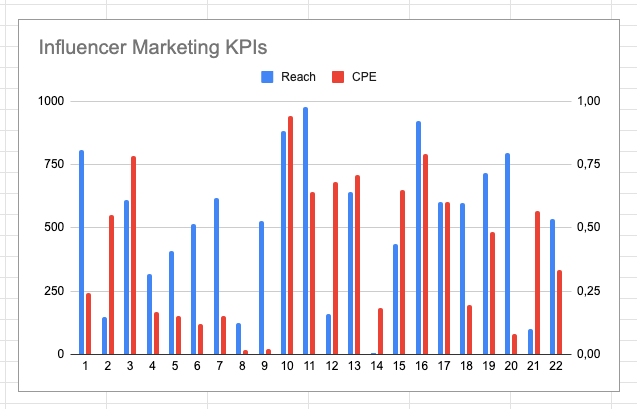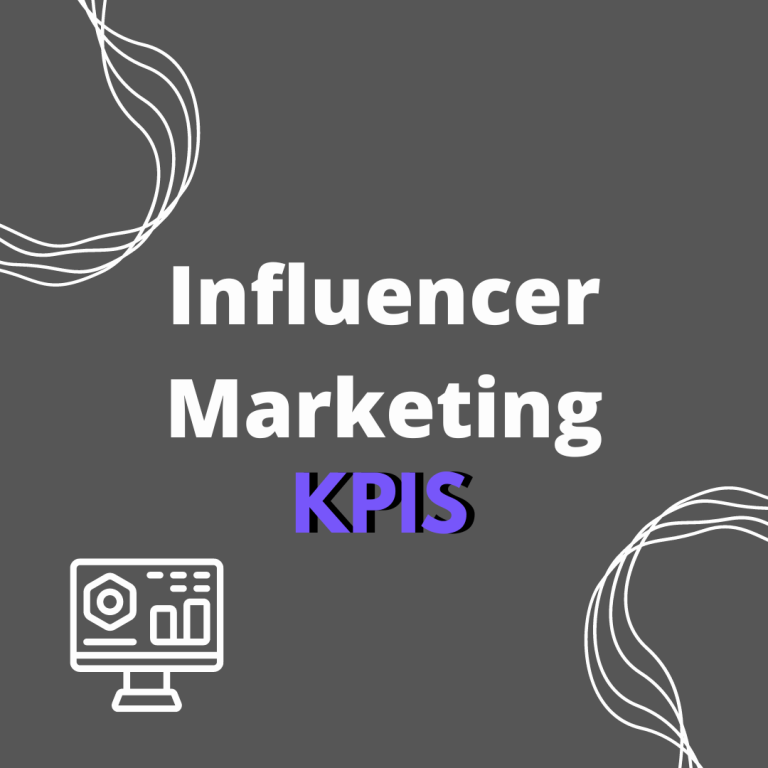In the current era of digital marketing, influencer marketing has gained immense popularity as a way for businesses to connect with their target audience and promote their products or services. Partnering with social media influencers enables companies to leverage the influencer’s loyal following and capitalize on their authority and trust within their niche.
However, to make the most out of influencer marketing, it’s crucial to monitor and measure the effectiveness of your campaigns. This is where Influencer Marketing KPIs (Key Performance Indicators) play a crucial role. By choosing appropriate KPIs and regularly tracking and analyzing them, you can evaluate the success of your influencer marketing efforts and make informed decisions to optimize your campaigns.
In this blog post, we’ll explore six essential influencer marketing KPIs that you should be monitoring to gauge your campaign’s success. Whether you’re an experienced marketer or just starting with influencer marketing, these KPIs will help you stay on top of your campaign’s performance and achieve your business objectives. So, let’s delve into it!

What are KPIs?
In the world of business, Key Performance Indicators (KPIs) play a crucial role in tracking progress toward specific objectives. These measurable values allow individuals, teams, and organizations to evaluate their performance, pinpoint areas for improvement, and make informed decisions based on data.
KPIs can be tailored to various aspects of a business, such as sales, marketing, customer service, or operations, and can be customized to reflect specific goals and targets. For example, a marketing team may choose to measure KPIs such as website traffic, lead generation, or social media engagement to gauge the effectiveness of their campaigns.
Typically presented in a dashboard or report, KPIs enable stakeholders to track progress towards their goals in a straightforward and efficient manner. Regular monitoring and analysis of KPIs can assist businesses in making data-driven decisions and adjusting their strategies as required to improve their performance and achieve their desired outcomes

Most common marketing KPIs
- Conversion rate: This is the percentage of people who take a desired action on your website, such as making a purchase, filling out a form, or subscribing to a newsletter.
- Customer acquisition cost (CAC): This is the amount of money it costs to acquire a new customer through marketing efforts.
- Return on investment (ROI): This is the ratio of the amount of money gained or lost on a marketing campaign compared to the amount invested.
- Click-through rate (CTR): This is the percentage of people who click on a link in an ad or email.
- Engagement rate: This is the level of interaction between a brand and its audience, often measured by likes, comments, and shares on social media.
- Cost per click (CPC): This is the amount of money it costs to generate a click on an ad.
- Net promoter score (NPS): This is a measure of customer loyalty and satisfaction, calculated by asking customers how likely they are to recommend a product or service to others.
- Brand awareness: This measures how familiar people are with a brand or product, often measured by surveys or online mentions.
- Customer lifetime value (CLV): This is the amount of revenue a customer is expected to generate for a business over their lifetime.
- Churn rate: This measures the percentage of customers who stop using a product or service over a certain period of time.
No, not all of these KPIs are directly related to influencer marketing KPIs. So now it’s time to find out what they are the key influencer marketing KPIs.
Key Influencer Marketing KPIs
The most important influencer marketing KPIs may vary depending on the specific goals and objectives of a campaign and the type of product or service being promoted. However, here are some of the most commonly used and important KPIs in influencer marketing:
1. Engagement Rate
The engagement rate is a KPI used to measure how much interaction an influencer’s content receives from their audience. This can include actions such as likes, comments, shares, and views. Each of these activities can be a separate indicator. The formula to calculate the engagement rate is by dividing the total number of engagements by the total number of impressions(followers) and then multiplying the result by 100 to get a percentage.
A high interaction rate means that the post was liked by followers. You can use this measure before selecting an influencer to see how engaged his audience is. Or after publishing a sponsored post to measure its success.
2. Reach
The reach KPI is used to measure the number of people who have seen the influencer’s content. It is calculated by adding up the total number of followers and impressions or can be found in social media analytics tools.
A higher reach value indicates that more people saw your product. This is an especially important indicator when you want to increase brand awareness. By tracking reach, we’ll know how many people the campaign reached but we won’t know if they liked it.
3. Conversion Rate
Conversion rate tells us what percentage of people who saw the content performed the action, that we assumed. It can be any action you set as a goal, such as making a purchase, signing up for a newsletter, or visiting a website. The calculation involves dividing the number of conversions, which is the number of people who took the desired action, by the total number of views, and then multiplying by 100 to get a percentage.
A high conversion rate will indicate the high effectiveness of the campaign. That is, the influencer’s audience is also the audience of your product. A low score will mean a bad choice of influencer.
4. Cost per Engagement (CPE)
The Cost Per Engagement (CPE) KPI measures the cost per interaction under an influencer’s content, such as likes, comments, or shares. This KPI is calculated by dividing the total cost of the campaign by the total number of engagements. You can use a CPE calculator for this.
This indicator can be used as a measure of the economic viability of a campaign. If you know the price of posts from influencers, you can check his other promotional posts(what interaction they had) to calculate CPE. This will help you choose an influencer, and not overpay.
5. Return on Investment (ROI)
This KPI measures the financial return on your investment in marketing campaigns. Influencer marketing campaigns can be expensive, and it’s crucial to ensure that your investment is generating returns. It can be calculated by subtracting the total cost of the campaign from the total revenue generated and dividing it by the campaign cost. The result is multiplied by 100 to get a percentage.
A positive ROI indicates that the campaign is profitable and the revenue generated is greater than the cost of the campaign. This KPI can be calculated after the campaign is over and should determine whether you should do further influencer marketing campaigns.
6. Audience Growth
This KPI measures the increase in the number of followers on your social media during a campaign. To calculate this, simply subtract the number of followers after and before the campaign.
It’s worth comparing this to your standard pre-campaign audience growth over the same time period. Such a comparison will show you how much a marketing campaign actually increased interest in your brand.
A high audience growth rate can indicate that the influencer campaign was successful and the influencer has generated a lot of interest in your brand. And you gained new people who are interested in your products.
Overall
Overall, it’s important to choose the right influencer marketing KPIs that align with the specific goals and objectives of the influencer marketing campaign and to track and analyze the data regularly to make informed decisions and adjustments to the campaign as needed.
Check out our other articles about marketing!




